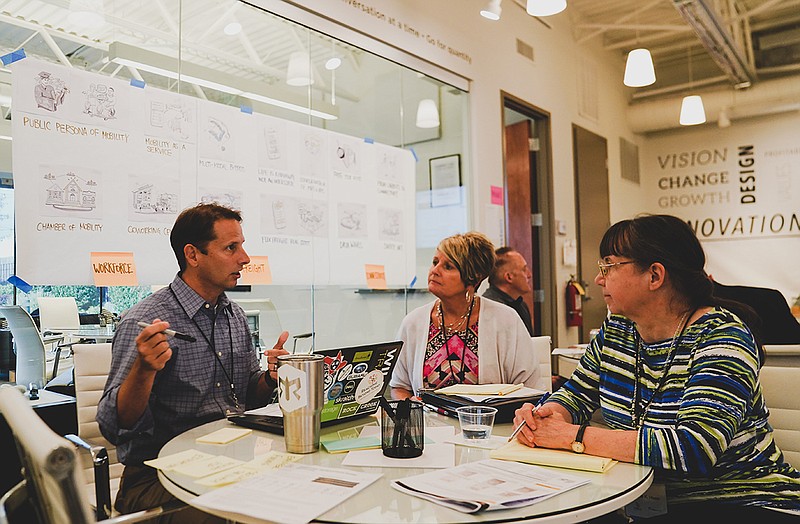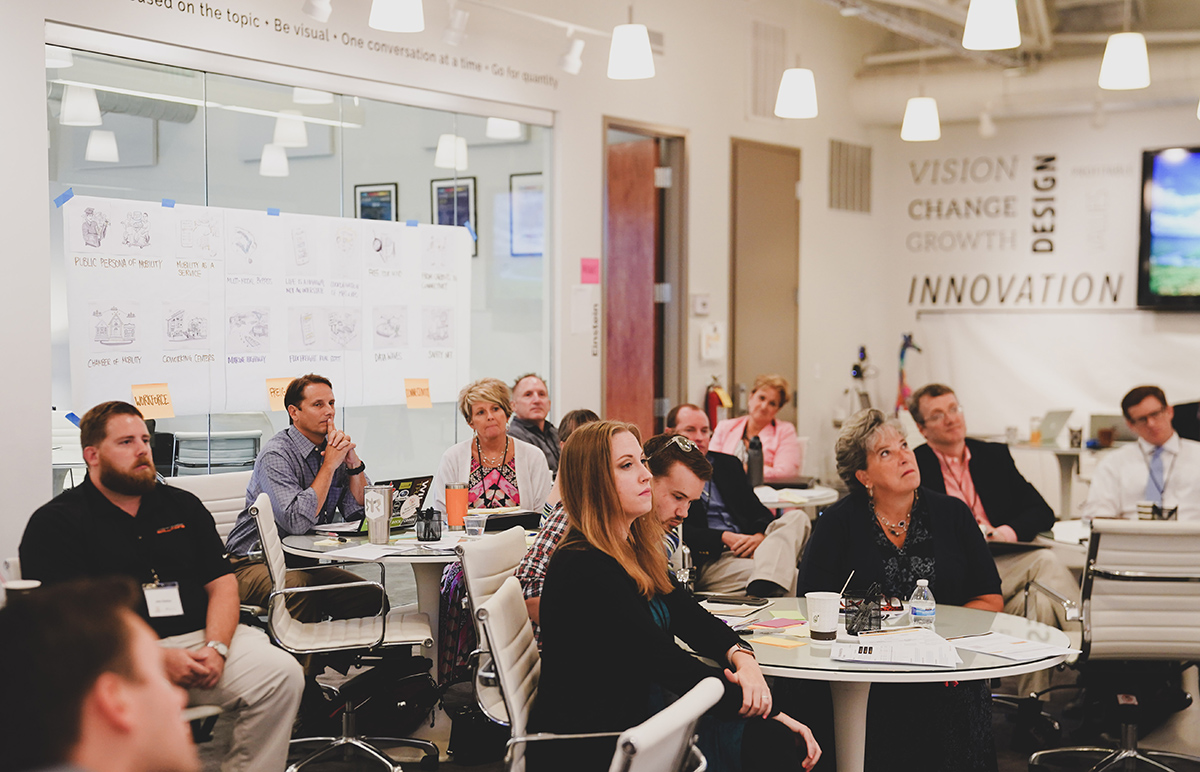Bridgett Massengill still remembers the day she showed a group of local students a picture of cargo ships docking at a seaport and asked them what they thought the shipping containers held.
Their answer? Trash.
"I said, 'It's not trash. It's going to have the iPhone that you have here today. It's going to have the laptop that you're dependent on,'" Massengill recounted during a quarterly meeting of the Advisory Council on Traffic Safety Jan. 22. "[I wanted them] to understand that that freight, what is coming, is absolutely very, very much a part of our driving economy."
It's the same message she hoped to communicate to local business, government and law enforcement personnel while updating them on Thrive Regional Partnership's Transportation Collaborative last week.
Initiated in 2017, the study was designed to generate solutions for the future of transportation infrastructure in the tri-state region, specifically as related to freight, workforce transit, and data connectivity.
Right now, the interchange of Interstate 24 and U.S. Highway 27 is ranked No. 11 in the nation for worst freight gridlock, according to a 2018 report by the American Transportation Research Institute. And with the Port of Savannah's harbor-deepening project expected to greatly increase the number of shipments to what is already the nation's fourth-busiest port by 2022 - plus another inland port coming to Gainesville, Georgia, by 2021 - the problem is only expected to get worse, Massengill said.
According to data compiled through the Thrive 2055 strategic planning initiative, Chattanooga is expected to see an estimated 33 million tons of freight pass through its urban area annually by 2035. The figure marks a 32 percent increase from the benchmark recorded in 2007, when freight flows exceeded 25 million tons.
Massengill said one of the challenges will be to prepare for that growth in truck traffic and daily commuters alike without subtracting from the natural treasures that make the region a desirable place to live.
Another challenge, she continued, will be establishing lines of communication between neighboring counties, such as Bradley and Whitfield, in order to coordinate future transportation projects. Currently, no such correspondence has been developed between the counties.
Massengill warned that neglecting to do forge those links could lead shippers to decide the best routes based on convenience, as they do now, as opposed to putting the counties in the driver's seat, enabling them to develop routes that intentionally guide freight traffic from county to county through interconnected roadways collectively devised with safety and efficiency in mind.
"We are not structured in a way to have the conversation about how we interrelate all these things we're talking about," Massengill explained, citing the impetus for Thrive and its partner studies. "So instead of living in a silo, we're pulling all of these together to address this issue."
The collaborative efforts will include more than just transportation officials from neighboring counties. Moving forward, the organization hopes to tap the minds of local businesses, innovators, law enforcement personnel and more to also brainstorm viable traffic solutions for the area.
Traffic investigator Terry Smith of the East Ridge Police Department said he believes local officers could bring value to the conversation. Their knowledge of local commuter habits could provide alternative solutions, such as finding ways to reduce congestion in problem areas, he said.
"I'm just telling you what I see every day - it's the daily commuters when I'm working wrecks," said Smith, explaining that local drivers' familiarity with the roads can lead to reckless behavior. "So we have maybe a little different perspective."
Email Myron Madden at mmadden@timesfreepress.com.

